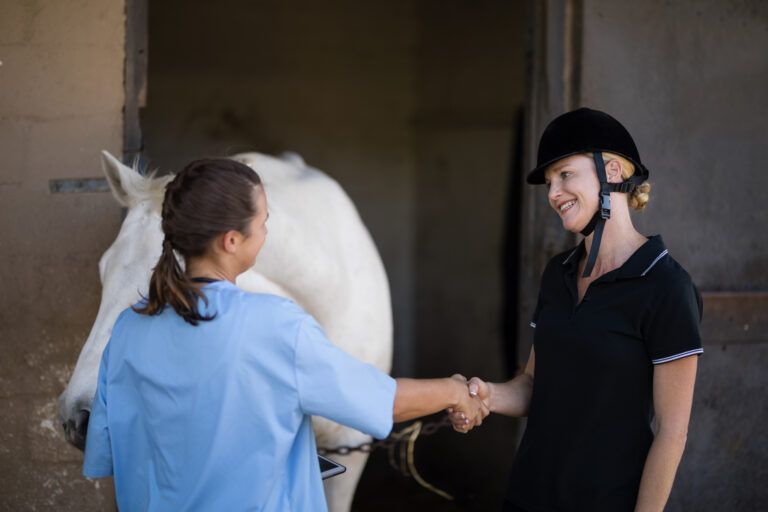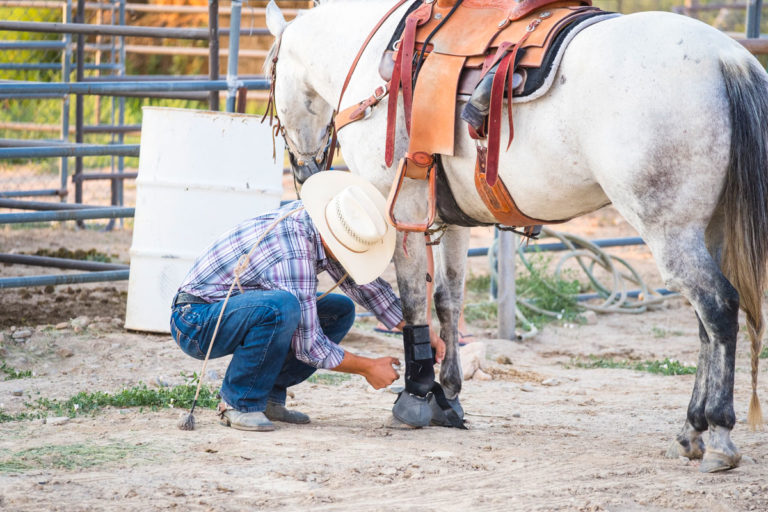
In recent years, there has been increased scrutiny about fatal losses of equine racing athletes. Sudden death in racehorses has been a significant concern. An Equine Injury Database provides data from 92.2% of all flat racing starts in the United States and Canada.
A study at the University of Glasgow School of Veterinary Medicine reviewed results of nearly 4.2 million race starts of 284,387 Thoroughbreds at 144 racetracks during 2009-2021 [Bennet, E.D.; Parkin, T.D.H. Fifteen risk factors associated with sudden death in Thoroughbred racehorses in North America (2009-2021). Journal of Veterinary Medical Association 2022; doi.org/10.2460/javma.22.08.0358].
Deaths examined occurred within three days of racing and did not include those related to musculoskeletal injury.
Racehorses typically enjoy peak health and fitness, with sudden death as an unusual occurrence. Historically, sudden death of racehorses occurs at a rate of 1 sudden death per 10,000 horses starts. The researchers evaluated “the statistical measure of association of increased (or decreased) likelihood of sudden death in a group exposed to a risk (or protective) factor compared to an unexposed group.”
Causes of Sudden Death in Racehorses
In this study, the injury or diagnosis of a fatality within three days of a race occurred in 536 horses to include: a) sudden death in 86.2%; b) pulmonary hemorrhage in 10.8%; c) exercise-induced pulmonary hemorrhage in 9.1%; d) post-exertional distress/heat stroke in 3.9%; and e) cardiac arrhythmia in 2.2%. Only 0.2% (one horse) collapsed and died during the racing effort.
Overall incidence of sudden death from these causes during this time period was 0.13 sudden deaths/1,000 starts. This is in comparison to total deaths from all causes (including musculoskeletal) with an incidence of 1.72/1000 starts (2.5% of horses).
Significant Risk Factors
Of 49 risk factors examined initially, 15 had a significant association with an increased risk of sudden death. One significant finding has to do with furosemide administration on race day. Findings in the study covered a wide range of possibilities:
- Horses racing in winter had a 28% reduced risk of sudden death compared to summer racing. Spring and autumn risks were comparable to summer.
- Synthetic track surfaces reduced risk by 33% compared to dirt tracks. Turf and dirt surface risks were comparable.
- Longer race distances reduced risk by 32% compared to horses racing in six or less furlongs.
- State-bred races had 41% less risk, possibly because these horses travel less distance to the venue.
- Horses in races with purse values of more than $10,000 had 40% greater risk of death than races with purses less than $10,000, possibly due to a greater competitive effort asked of the horses.
- Stallions had a 39% higher risk of sudden death compared to mares and geldings.
- Horses older than five years had 44% higher risk compared to horses three years or younger.
- Horses with two or more starts within the previous 30 days had less risk of sudden death.
- Horses with two or more race starts in the 3-6 months preceding the current race had 19% less risk compared to horses that had one or no starts during that same period.
- Horses in their first start as a claimer had 38% increased risk compared to those not in claiming races.
- Horses with a layup of longer than 60 days had a 37% increased risk when the lay-up was within 30 days of the current start. Those that finished their lay-up at least 30 days before the race had no different risk than horses with no lay-up. Lay-ups occur for not only injury or illness but also for planned rest. The authors comment that those participating in races less than a month following a lay-up might not have been as prepared for the effort.
- Horses racing a longer cumulative career distance had less risk of sudden death than those with less distance. For example, those racing a cumulative 16.7 miles had 20% less risk than those racing a cumulative three miles.
- Horses with previous wins had increased risk, and those with three wins had 16% greater risk than those with no wins.
Risk of Furosemide
The most significant finding in this study was that horses recorded as receiving furosemide medication on race day had a 62% higher risk of sudden death.
What is of particular interest is that 94% of horse starts in this cohort were recorded as racing on furosemide. This makes it a very common risk factor. The authors explained that the diuretic effects of furosemide—used to control EIPH by reducing blood volume, blood flow, and pulmonary arterial pressure—also cause urinary excretion of sodium, potassium and chloride with the potential to create electrolyte imbalances. This could predispose the horse to potentially fatal arrhythmias.
That said, the authors reported that the exact cause of death, i.e., cardiac versus non-cardiac, was not determined in this study. More research needs to follow, particularly about the ethics of race-day administration of furosemide.








